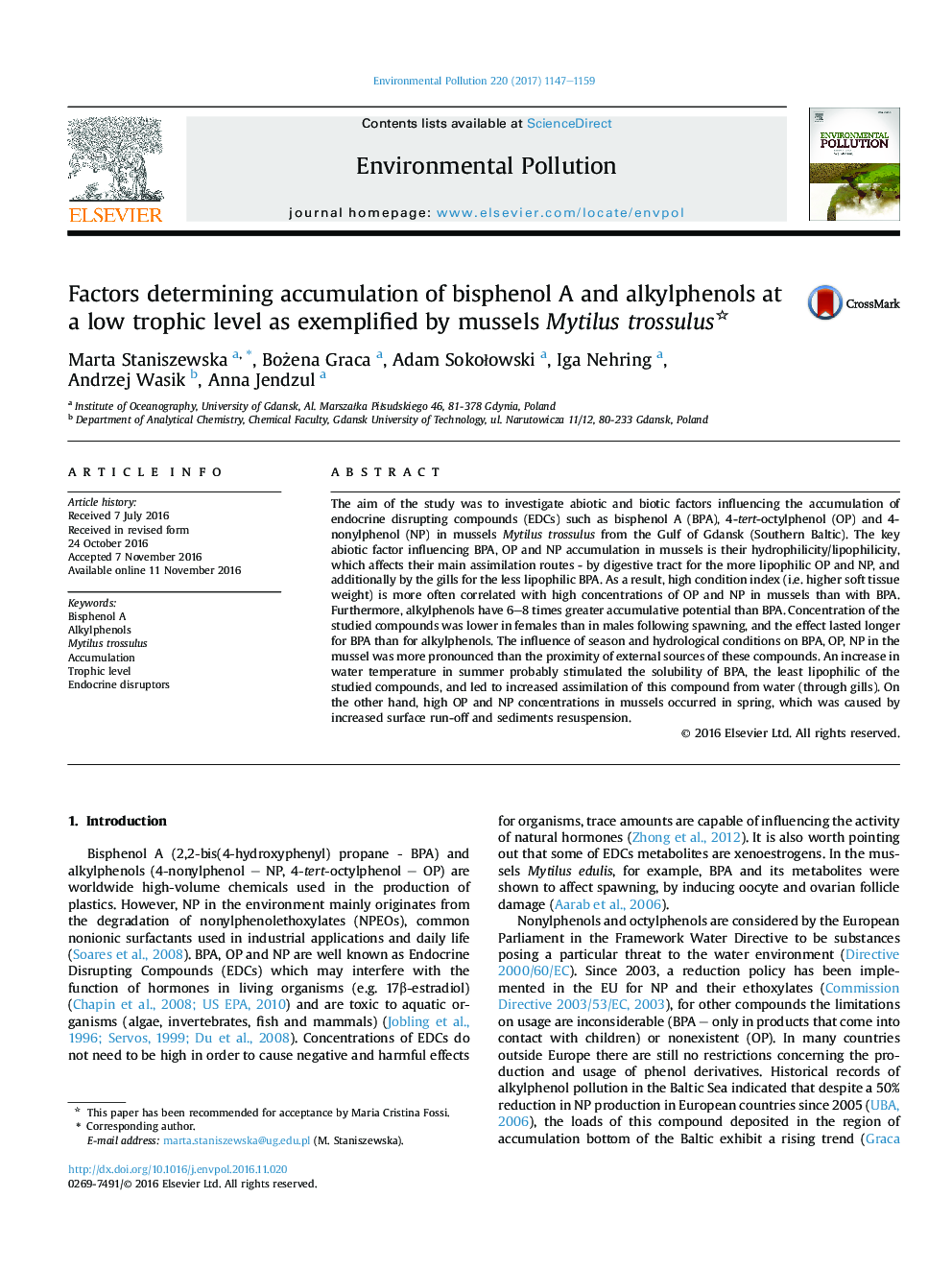| کد مقاله | کد نشریه | سال انتشار | مقاله انگلیسی | نسخه تمام متن |
|---|---|---|---|---|
| 5749545 | 1619153 | 2017 | 13 صفحه PDF | دانلود رایگان |

- The bioconcentration of BPA, OP and NP in tissues of mussels is high.
- BPA, OP and NP lipophilicity determines their bioaccumulation/bioconcentration.
- Mussels assimilate BPA via ingestion and gills OP and NP via ingestion.
- Accumulation of OP, NP in mussels is more connected to CI than accumulation of BPA.
- Spawning decreases OP, NP contents in female mussels for longer than BPA content.
The aim of the study was to investigate abiotic and biotic factors influencing the accumulation of endocrine disrupting compounds (EDCs) such as bisphenol A (BPA), 4-tert-octylphenol (OP) and 4-nonylphenol (NP) in mussels Mytilus trossulus from the Gulf of Gdansk (Southern Baltic). The key abiotic factor influencing BPA, OP and NP accumulation in mussels is their hydrophilicity/lipophilicity, which affects their main assimilation routes - by digestive tract for the more lipophilic OP and NP, and additionally by the gills for the less lipophilic BPA. As a result, high condition index (i.e. higher soft tissue weight) is more often correlated with high concentrations of OP and NP in mussels than with BPA. Furthermore, alkylphenols have 6-8 times greater accumulative potential than BPA. Concentration of the studied compounds was lower in females than in males following spawning, and the effect lasted longer for BPA than for alkylphenols. The influence of season and hydrological conditions on BPA, OP, NP in the mussel was more pronounced than the proximity of external sources of these compounds. An increase in water temperature in summer probably stimulated the solubility of BPA, the least lipophilic of the studied compounds, and led to increased assimilation of this compound from water (through gills). On the other hand, high OP and NP concentrations in mussels occurred in spring, which was caused by increased surface run-off and sediments resuspension.
272
Journal: Environmental Pollution - Volume 220, Part B, January 2017, Pages 1147-1159